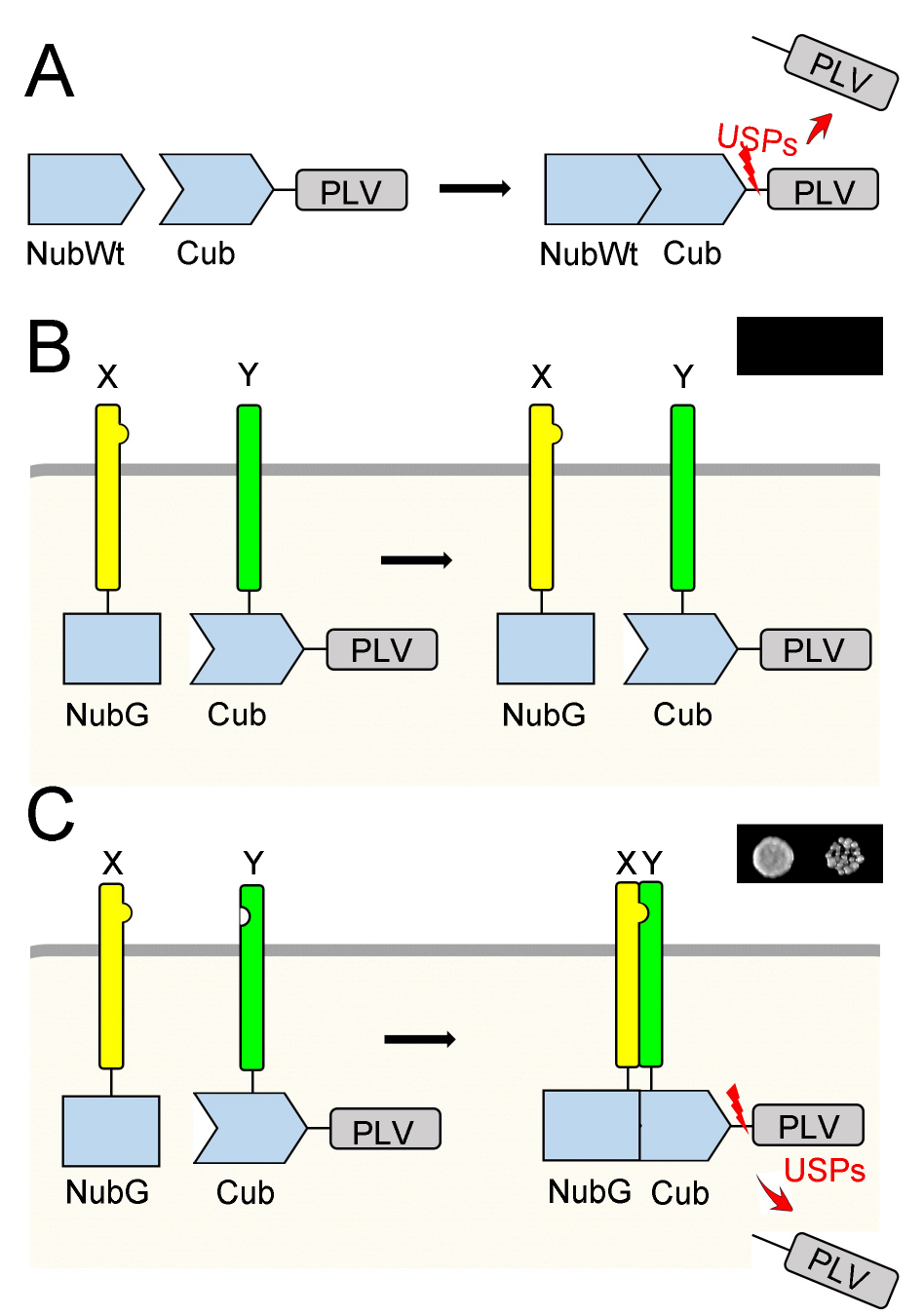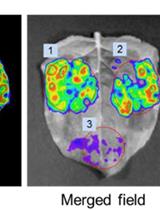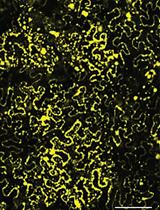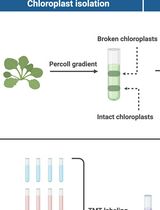- EN - English
- CN - 中文
Mating Based Split-ubiquitin Assay for Detection of Protein Interactions
mbSUS酵母双杂系统检测蛋白质的相互作用
发布: 2017年05月05日第7卷第9期 DOI: 10.21769/BioProtoc.2258 浏览次数: 17157
评审: Arsalan DaudiRia SircarTimothy Notton
Abstract
The mating based split-ubiquitin (mbSUS) assay is an alternative method to the classical yeast two-hybrid system with a number of advantages. The mbSUS assay relies on the ubiquitin-degradation pathway as a sensor for protein-protein interactions, and it is suitable for the determination of interactions between full-length proteins that are cytosolic or membrane-bound. Here we describe the mbSUS assay protocol which has been used for detecting the interaction between K+ channel and SNARE proteins (Grefen et al., 2010 and 2015; Zhang et al., 2015 and 2016)
Keywords: mbSUS (mbSUS)Background
Figure 1 is an overview of the mbSUS assay. The ubiquitin moiety is split into two halves, and the N-terminal half is mutated (NubG) to avoid reassembly. The C-terminal half of the ubiquitin moiety (Cub) is linked with the transcription reporter complex PLV (Protein A-LexA-VP16). The fusion of two proteins (X and Y) to NubG and CubPLV, respectively, yields a system for protein-protein interaction analysis. After transformation, the yeast strain THY.AP5 contains the NubG-X fusion protein, while yeast strain THY.AP4 contains the Y-CubPLV fusion protein. After mating, in the diploid yeast, if proteins X and Y interact with each other, a functional ubiquitin will be reassembled which leads to cleavage of the PLV. The released transcription protein complex PLV switches on reporter genes (ADE2, HIS3) and allows yeast growth on selective media.
Figure 1. The split-ubiquitin system. A. The Ubiquitin is split into two halves, the N-terminal wild type half (NubWt; NubI) and the C-terminal half (Cub). Reassembly of NubWt and Cub leads to the release of the transcription reporter complex Protein A-LexA-VP16 (PLV) by ubiquitin-specific proteases (USPs). B. Mutating the isoleucine at position 13 of the N-terminal half to glycine yields the NubG protein, which inhibits the spontaneous reassembly of ubiquitin. In diploid yeast, NubG-X and Y-CubPLV fusion proteins are produced. If X and Y do not interact, no functional ubiquitin is formed, and the yeast cannot grow on selective media as shown in a small image on top-right. C. If X interacts with Y, then NubG and Cub can reassemble as a functional ubiquitin, which leads to the release of PLV. The PLV activates the reporter genes (ADE2, HIS3) synthesising ADE and HIS, which allows yeast growth on the selective media without these chemicals as shown in a small image on top-right.
Materials and Reagents
- Sterile toothpick
- Round bottom polystyrene tubes, 14 ml (purchased as sterile) (Corning, catalog number: 352051 )
- Blue screw cap tubes, 50 ml (purchased as sterile; Cellstar)
- Screw cap tubes, 2 ml (purchased as sterile; SARSTEDT)
- PCR tubes, 0.2 ml, flat cap (Sterilized by autoclaving) (STARLAB INTERNATIONAL, catalog number: I1402-8100 )
- Nitrocellulose transfer membranes, BioTraceTM NT (Pall, catalog number: 66485 )
- 1.5 ml screw cap tube
- Minisart® syringe filter, non-pyrogenic, 0.2 µm (Sartorius)
- Syringe filter w/0.45 µm polyethersulfone membrane (VWR, catalog number: 28145-503 )
- Blotting paper (VWR, Blotting pad 707)
- Petri dishes, 55 mm (purchased as sterile) (Greiner Bio One International, catalog number: 628102 )
- Square Petri dishes, 120 x 120 mm (purchased as sterile) (Greiner Bio One International, catalog number: 688102 )
- Filter tips 10, 200, 1,000 μl (Biosphere® Plus, for micropipettes, SARSTEDT)
- Saccharomyces cerevisiae yeast strains used in the mbSUS assay (Table 1)
Table 1. Yeast strains used for mbSUS assayName Genotype Function Reference THY.AP4 MATa;
ade2-, his3-, leu2-, trp1-,
ura3-;
lexA::ADE2,
lexA::HIS3, lexA::lacZBait: carrying the Y-
CubPLV in vector
pMetYC-Dest(Obrdlik et al., 2004) THY.AP5 MATα;
URA3;
ade2-, his3-, leu2-, trp1-Prey: carrying the
NubG-X in vector
pNX35-Dest or NubWt(Obrdlik et al., 2004) - Destination vectors used in the mbSUS assay (Table 2)
Table 2. The destination vectors used for mbSUS assayVector name Promotor Gateway site Function Reference pMetYC-Dest met25 attR1, attR2 Fusion protein with C-terminal
CubPLV as bait; synthesis of
LEU in yeast(Grefen et al., 2009) pNX35-Dest ADH1 attR1, attR2 Fusion protein with N-terminal
NubG as prey; synthesis of
TRP in yeast(Grefen and Blatt, 2012) - Donor vector: pDONR207 vector (Thermo Fisher Scientific) or other donor vectors contain attP1, attP2 Gateway cassette
- Gateway® clonase enzyme:
- BP Clonase®II Enzyme Mix (Thermo Fisher Scientific, InvitrogenTM, catalog number: 11789020 )
- LR Clonase®II Enzyme Mix (Thermo Fisher Scientific, InvitrogenTM, catalog number: 11791020 )
- Protein ladder (Pageruler Plus Prestained Protein Ladder, Thermo Fisher Scientific)
- Western blot signal detection kit (SuperSignal West Dura Chemiluminescent Substrate) (Thermo Fisher Scientific, Thermo ScientificTM, catalog number: 37071 )
- Antibody solutions
- Primary: anti-HA (1:20,000, Anti-HA high-affinity Rat monoclonal antibody) (Roche Diagnostics, catalog number: 11867423001 ) or anti-VP16 (1:20,000, Anti-VP16 tag antibody in Rabbit) (Abcam, catalog number: ab4808 )
- Secondary: anti-rabbit HRP (1:20,000, goat anti-rabbit IgG-HRP) (Thermo Fisher Scientific, InvitrogenTM, catalog number: G-21234 ) or anti-rat HRP (1:20,000, Rabbit anti-Rat IgG H&L [HRP]) (Abcam, catalog number: ab6734 )
- Methionine
- Glycerol (Fisher Scientific, catalog number: 10795711 )
- Peptone (FormediumTM, catalog number: PEP02 )
- Glucose (Fisher Scientific, catalog number: 10141520 )
- Yeast extract (FormediumTM, catalog number: YEA02 )
- Oxoid agar (Agar No.1) (Oxoid, catalog number: LP0011 )
- Potassium hydroxide (KOH) (Sigma-Aldrich, catalog number: 60377 )
- Lithium acetate dihydrate (Sigma-Aldrich, catalog number: L4158 )
- De-ionized water
- Acetic acid (Sigma-Aldrich, catalog number: 1.00063 )
- Salmon sperm DNA (ssDNA) (Sigma-Aldrich, catalog number: 31149 )
- Polyethylene Glycol 3350 (Spectrum Chemical Manufacturing, catalog number: Po125-500gm )
- YNB without ammonium sulphate, without potassium (MP Biomedicals, catalog number: 114029622 )
- Potassium dihydrogen orthophosphate (Fisher Scientific, catalog number: 10783611 )
- CSM-ADE-HIS-LEU-MET-TRP-URA (powder) (MP Biomedicals, catalog number: 114560222 )
- Agar
- Adenine sulphate (Sigma-Aldrich, catalog number: A3159 )
- Uracil (Sigma-Aldrich, catalog number: U1128 )
- L-leucine (Sigma-Aldrich, catalog number: L8912 )
- L-tryptophane (Sigma-Aldrich, catalog number: T4196 )
- L-histidine (Sigma-Aldrich, catalog number: H3911 )
- L-methionine (Sigma-Aldrich, catalog number: M5308 )
- Sodium dodecyl sulfate (SDS) (VWR, catalog number: 442444H )
- Urea (Sigma-Aldrich, catalog number: U5378 )
- DL-dithiothreitol (DTT) (Sigma-Aldrich, catalog number: 43817 or 43815 )
Note: The product “ 43817 ” has been discontinued. - Acrylamide (Sigma-Aldrich, catalog number: A8887 )
- Bromophenol blue
- Ammonium persulfate (Fisher Scientific, catalog number: 10020020 )
- TEMED (Sigma-Aldrich, catalog number: T9281 )
- Ammonium sulphate (VWR, catalog number: 21333.296 )
- Tris (Fisher Scientific, catalog number: BP152-1 )
- Glycine (Fisher Scientific, catalog number: 10070150 )
- Methanol (Sigma-Aldrich, catalog number: 34860 )
- Ponceau S (Sigma-Aldrich, catalog number: P3504 )
- Sodium chloride (VWR, catalog number: 27810.295 )
- Hydrochloric acid (HCl) (Sigma-Aldrich, catalog number: H1758 )
- Tween® 20 (Sigma-Aldrich, catalog number: P1379 )
- Milk powder (Marvel, Iceland, UK)
- YPD media (see Recipes)
- LiAc solution (see Recipes)
- ssDNA solution (see Recipes)
- PEG solution (see Recipes)
- CSM-minimal media (see Recipes)
- Reagents for auxotrophy selection (see Recipes)
- SCM-auxotrophy selection media (see Recipes)
- ‘Lyse & Load’ buffer (see Recipes)
- 10% SDS-PAGE separation gel (see Recipes)
- 5% SDS-PAGE stacking gel (see Recipes)
- Bjerrums buffer (see Recipes)
- Ponceau S solution (see Recipes)
- TBS solution and TBS-Tween solution (see Recipes)
- Running buffer (see Recipes)
- Blocking solution (see Recipes)
Equipment
- Incubator shaker for yeast growth in liquid culture (Sartorius, model: BS1 )
- Glass flask, 500 ml (sterilized by autoclaving) (Corning, PYREX®, catalog number: 4980-500 )
- High speed refrigerated microcentrifuge (Eppendorf, model: 5417 R )
- Refrigerated centrifuge for large volume liquid samples (Thermo Fisher Scientific, Thermo ScientificTM, model: SorvallTM LegendTM RT )
- PCR machine (VWR, PEQLAB, model: peqSTAR 96 Universal Gradient )
- Pipette
- Incubator for yeast growth on solid media plates (Gallenkamp, model: Ipr150 )
- Ultrasonic disintegrator (MSE, model: Soniprep 150 MSS150.CX , 9.5 mm probe)
- Biophotometer (Eppendorf, model: Biophotometer Plus 6132 )
- SDS-PAGE gel electrophoresis and blotting boxes (Bio-Rad Laboratories, models: Power PAC 1000 and Mini-PROTEAN Tetra Cell )
- Shaker for Western blot (Stuart, model: Stuart STR9 Gyro rocker )
- Semi-dry blotting system (VWR, PEQLAB, model: PerfectBlueTM Semi-Dry Blotter )
- Western blot imaging platform (Vilber, model: Fusion spectra )
- Vortex (Scientific Industries, model: Vortex-Genie 2 )
- Imaging system
- Autoclave
Procedure
文章信息
版权信息
© 2017 The Authors; exclusive licensee Bio-protocol LLC.
如何引用
Horaruang, W. and Zhang, B. (2017). Mating Based Split-ubiquitin Assay for Detection of Protein Interactions. Bio-protocol 7(9): e2258. DOI: 10.21769/BioProtoc.2258.
分类
植物科学 > 植物生物化学 > 蛋白质 > 相互作用
生物化学 > 蛋白质 > 相互作用 > 蛋白质-蛋白质相互作用
您对这篇实验方法有问题吗?
在此处发布您的问题,我们将邀请本文作者来回答。同时,我们会将您的问题发布到Bio-protocol Exchange,以便寻求社区成员的帮助。
Share
Bluesky
X
Copy link













